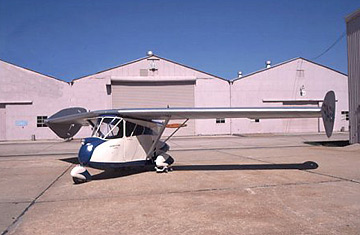
Waldo Waterman wanted aviation pioneer Glenn Curtiss to like him in the worst way. Inspired by what was apparently Curtiss' casual remark about driving an airplane away from the field, Waterman spent years developing a roadable airplane. In 1934, he flew his first successful prototype, the "Arrowplane," a high-wing monoplane with tricycle wheels. On the ground, the wings folding against the fuselage like those of a fly (now would be a good time to note that Waterman must have been crazy to get airborne in such a contraption). Nonetheless, the Arrowplane goes down as the first real flying car. Two decades later, Waterman finally perfected, if that's the word, what he then called the Aerobile, configured as a swept-wing "pusher" (prop in the back). There were few customers with so consummate a death wish as to order their own Aerobile, and Waterman's one working car-plane eventually wound up in the Smithsonian, where it can't kill anyone.